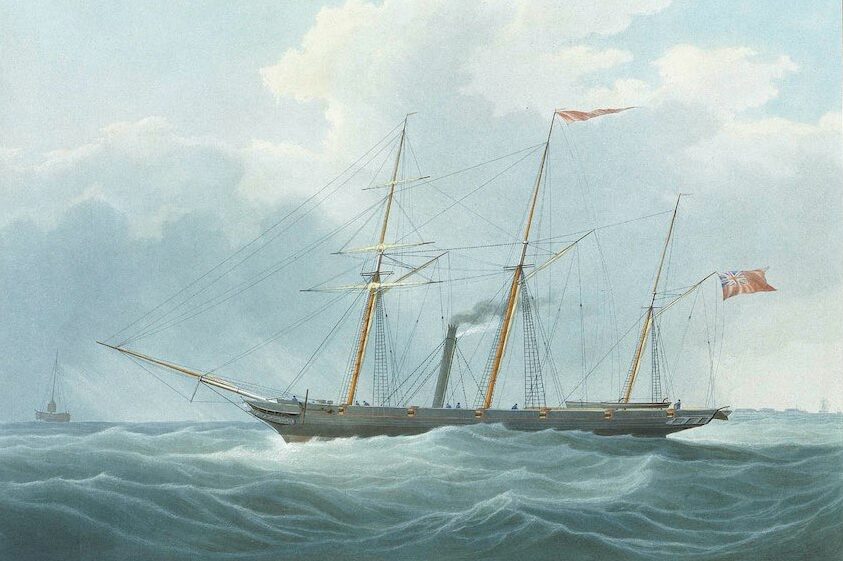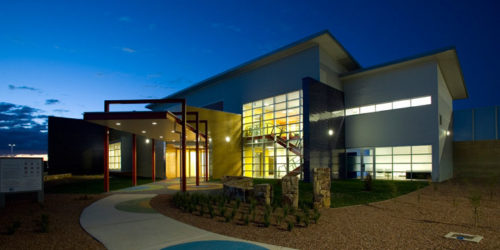
Whimsy columnist CLIVE WILLIAMS reprises his propellor theme, this time he looks at how it proved more efficient than sail or traditional paddlewheels and soon became the standard maritime propulsion system.
The last Whimsy column pondered why some aeroplanes use propellers, while others use jet engines. Ships have been the other major form of transportation using propellers since the early part of the 19th century.

The SS Archimedes, built in Britain in 1839, was the first commercial steamship to demonstrate the viability of a screw propeller in practical maritime use.
The propeller proved much more efficient than sail or traditional paddlewheels and soon became the standard maritime propulsion system.
Most ship propellers have three or four blades. The largest ship propeller was made by German company, Mecklenburger Metallguss GmbH at 133 tonnes weight.
Ship propellers are usually made from aluminium bronze. The largest props are typically aluminium bronze with nickel or manganese added.
For the technically minded, a ship’s propeller converts rotational motion into forward thrust, enabling the ship to move through water. The propeller’s rotating blades create a pressure difference causing thrust. This function is primarily based on Bernoulli’s principle and Newton’s third law of motion.
Ships’ propellers have been refined over the years, as have the means of driving them – including nuclear power.
Most of the underwater noise emitted from ships comes from propeller cavitation, which is related to inefficient water flow over the propeller blades and can result in significant noise and a loss in fuel efficiency.
The design of submarine propellers is usually security-classified because they’re specifically designed for silent running, so they’re supposed to be shrouded when out of the water.
I was surprised when I visited the Australian Submarine Corporation in 1999 (then headed by Hans Ohff, I kid you not) to conduct a leak investigation, to see a Collins Class submarine out of the water with no attempt to cover the propellers. It wasn’t a leak in the submarine that was a concern, but human leaks about problems with the vessel’s design that were causing Defence to have security concerns.
Anyway, there are several reasons why propellers remain the preferred method of ship propulsion:
- Efficiency: Propellers are more efficient at converting engine power into thrust in the water, compared to jet-propulsion systems.
- Cost: Propeller systems are generally less expensive to manufacture, install and maintain, compared to jet-propulsion systems.
- Reliability: Propellers have a simple design with few moving parts, which translates to higher reliability and easier maintenance.
- Manoeuvrability: Propeller-driven ships typically have better manoeuvrability, especially at low speeds, allowing for easier docking and navigation in confined spaces.
- Flexibility: Propellers can be easily adapted to different types of ships and propulsion systems, providing more flexibility in design and operation.
While jet-propulsion systems offer advantages in certain maritime applications, such as high-speed vessels (like hydrofoils or some military ships) propellers remain the preferred choice for most maritime transportation due to their efficiency, cost-effectiveness, reliability, and manoeuvrability.
Well, there you have it in a nutshell.
There aren’t many interesting anecdotes about propellers, but I turned up this one:
During World War II, a Royal Navy ship was navigating through dangerous waters, and the crew was on high alert for any signs of enemy submarines. One day, while they were patrolling, the sonar operator picked up an unusual sound coming from behind the ship. It sounded like a propeller, but it was irregular and not like anything they had heard before.
The captain, concerned that it might be a new type of enemy submarine, ordered the ship to take evasive manoeuvres. The crew was tense, ready for a potential encounter. They zig-zagged through the water, dropped depth charges, and listened intently, but the strange propeller noise continued to follow them.
After hours of this high-stress situation, the crew was exhausted and perplexed. The captain finally ordered the ship to slow down to try to pinpoint the source of the noise more precisely. As they reduced speed and the waters calmed, a diver was sent down to inspect the ship’s propeller.
To everyone’s surprise, it turned out that the propeller had caught an old, discarded fishing net, and the noise they’d been hearing was the net flapping and dragging behind them.
In closing: A cruise ship sinks, and the passengers and crew manage to escape on lifeboats.
A woman asks the captain: “How far is the nearest land?”
“Three miles,” he answers. “That’s not too bad” she says, somewhat relieved, “in which direction?” The captain replies: “Down”.
Clive Williams is a Canberra columnist
Who can be trusted?
In a world of spin and confusion, there’s never been a more important time to support independent journalism in Canberra.
If you trust our work online and want to enforce the power of independent voices, I invite you to make a small contribution.
Every dollar of support is invested back into our journalism to help keep citynews.com.au strong and free.
Thank you,
Ian Meikle, editor





Leave a Reply